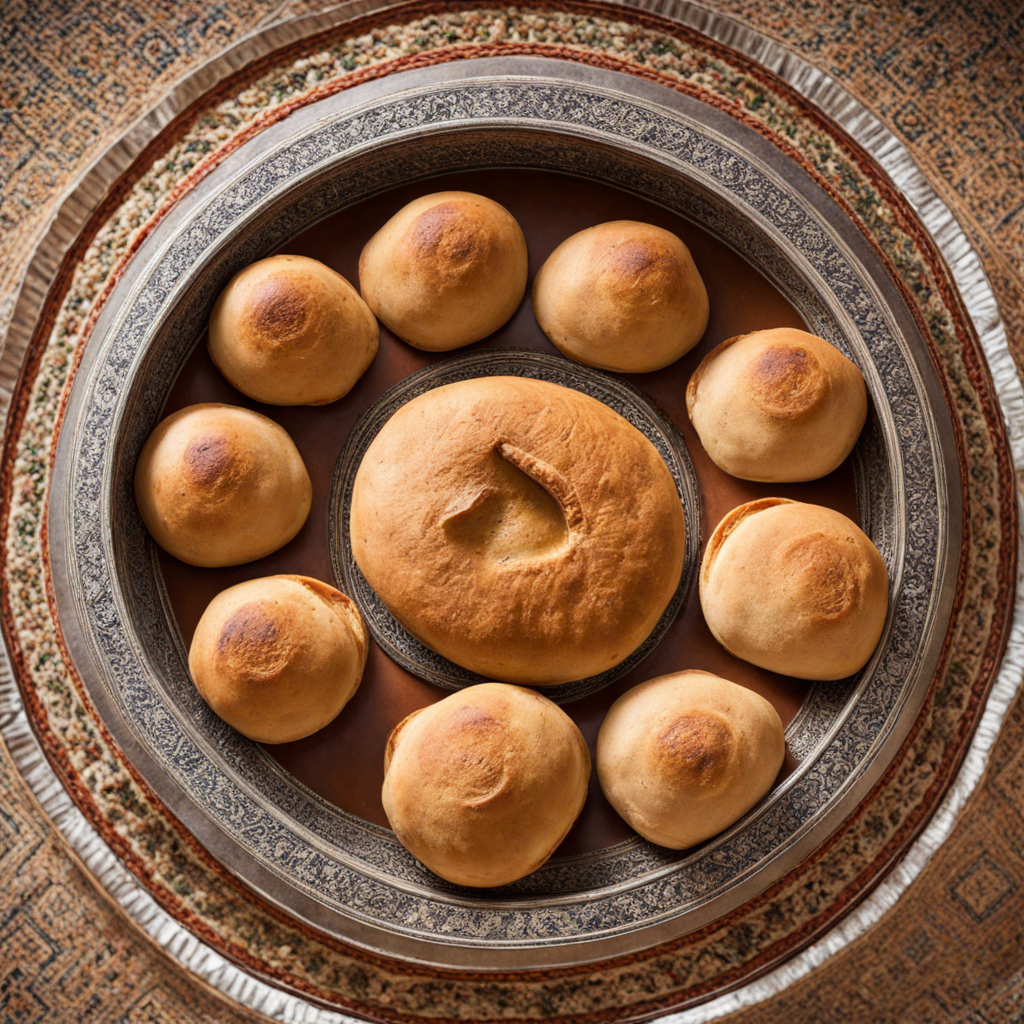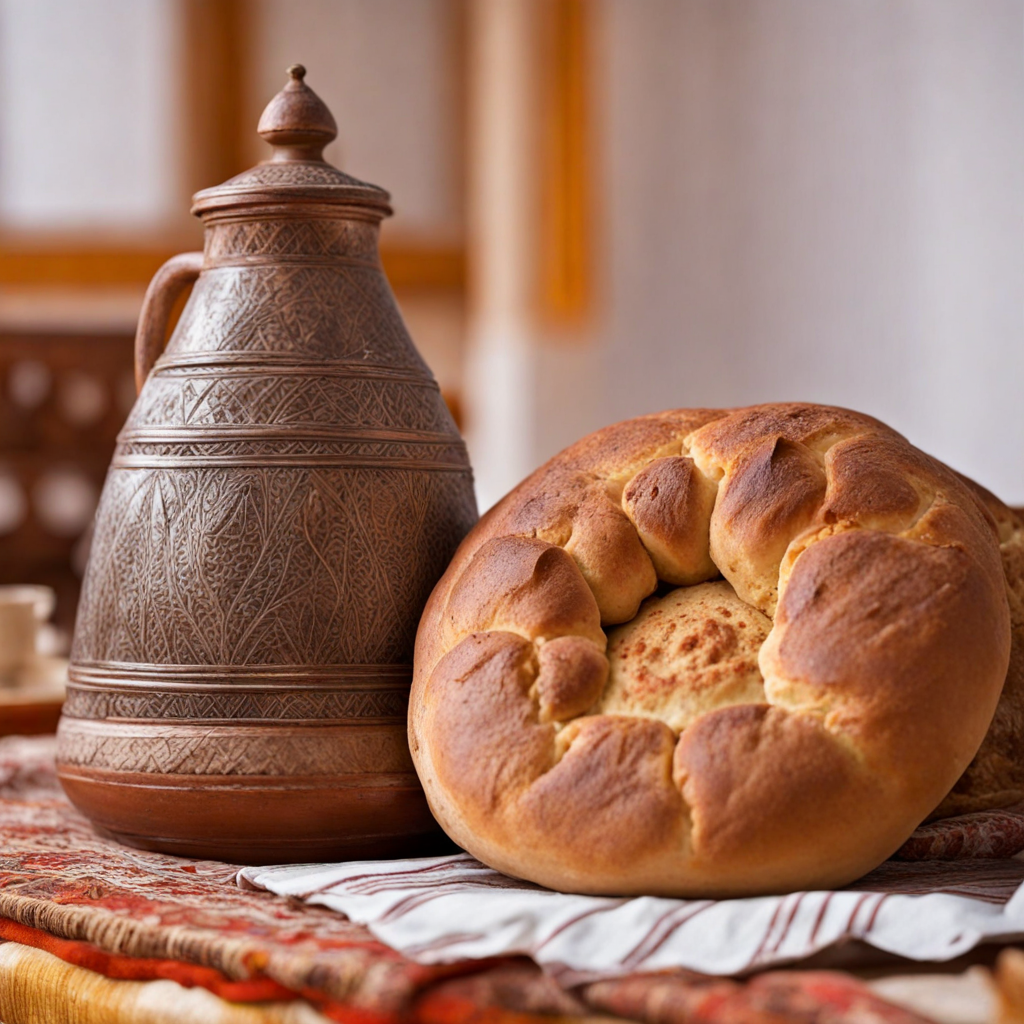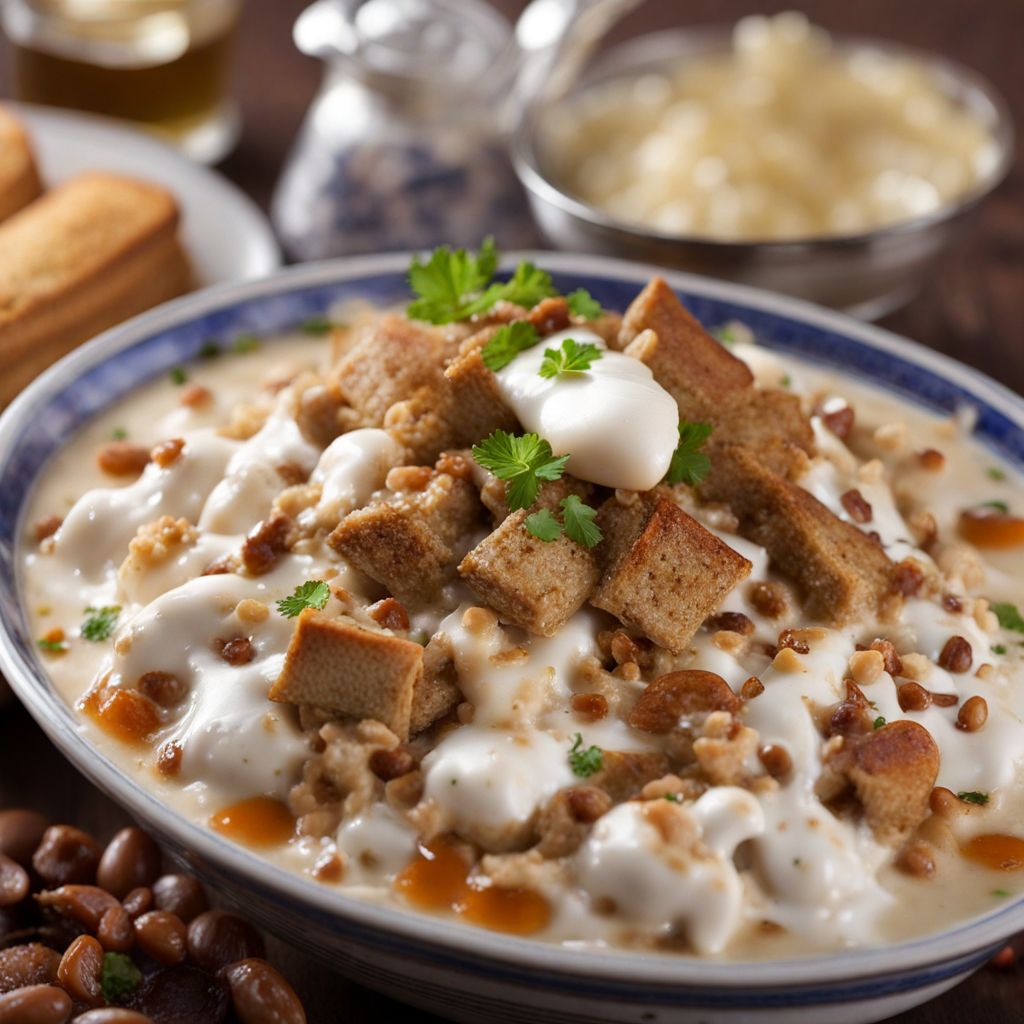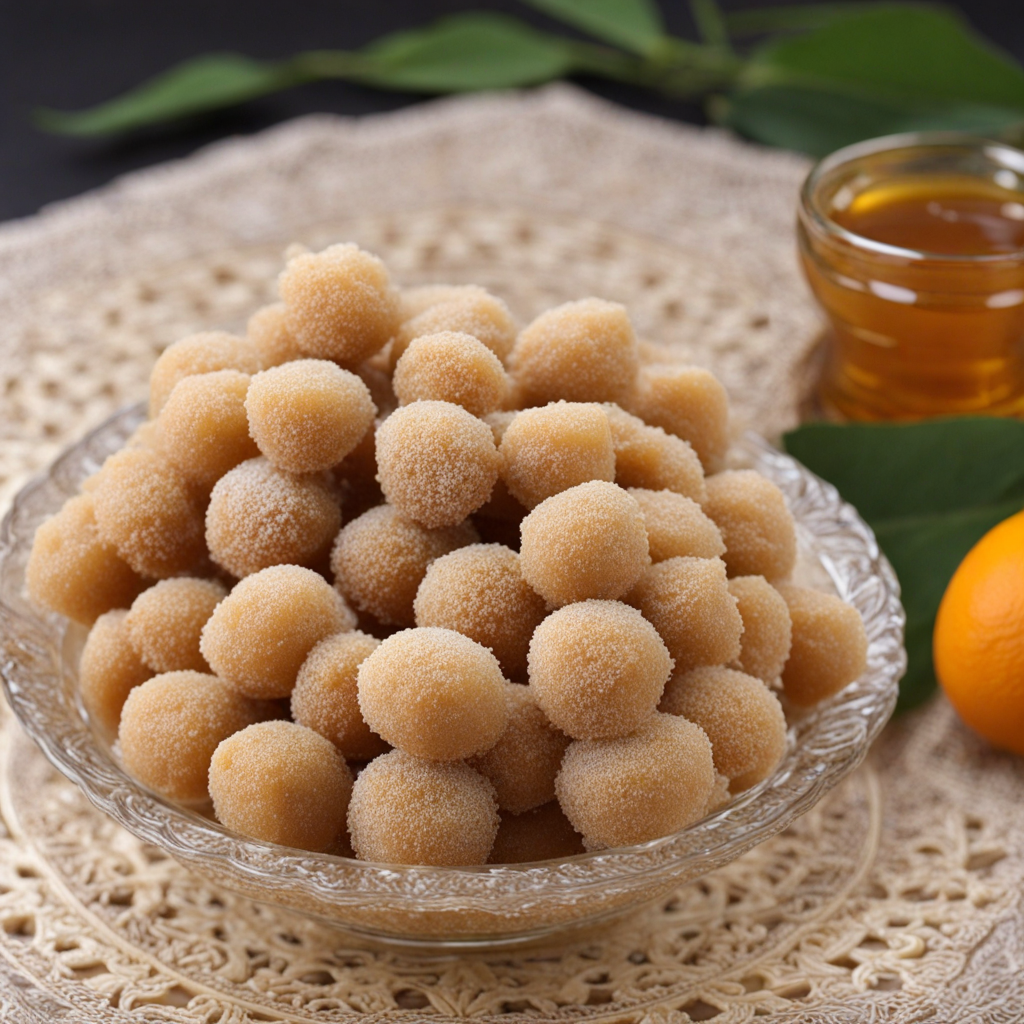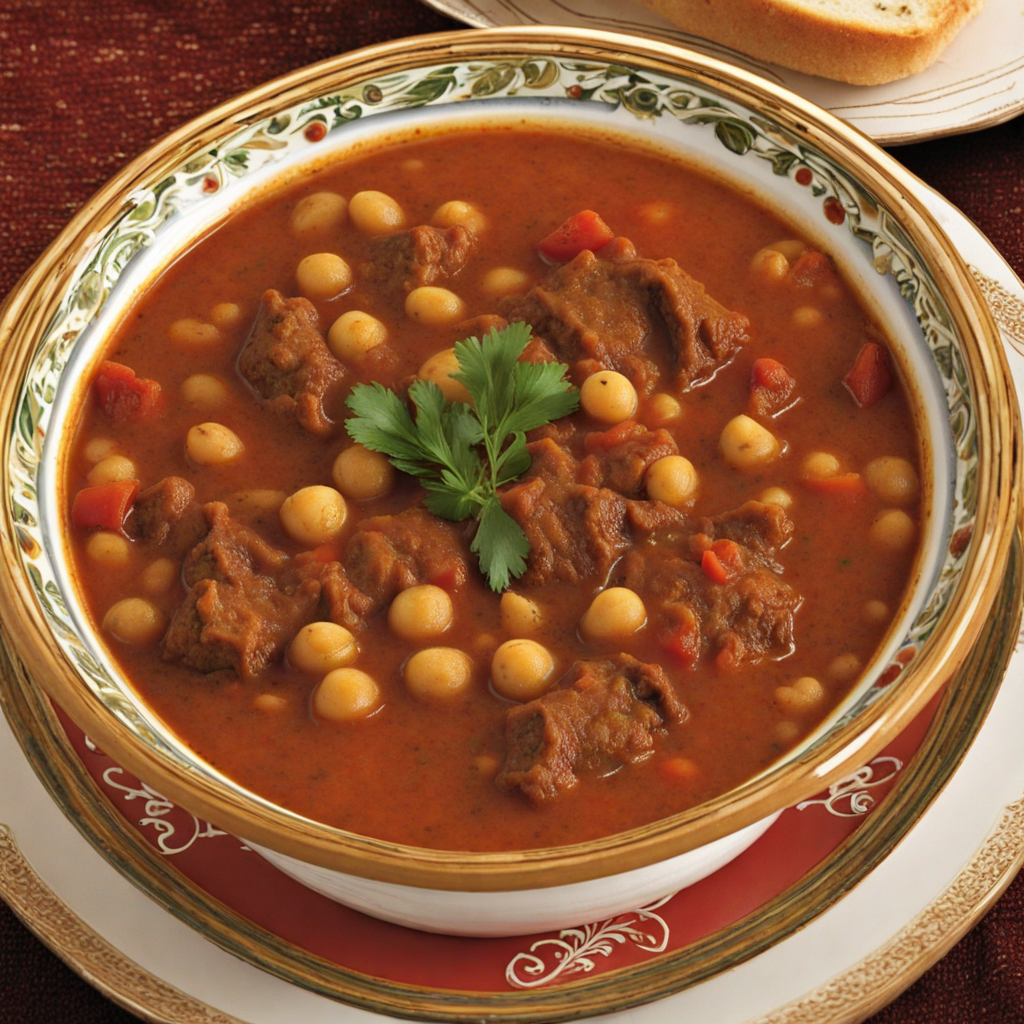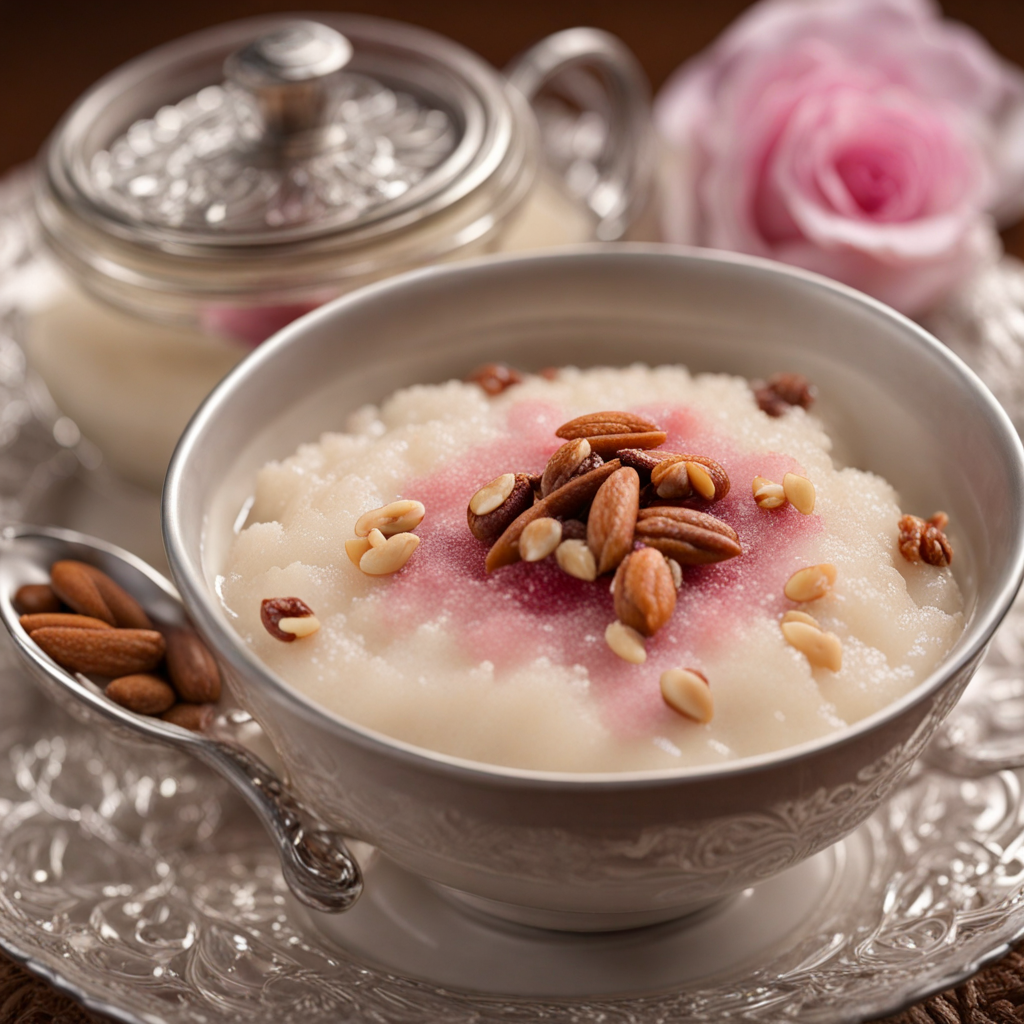Khobz
خبز, or bread, holds a central place in Libyan cuisine, reflecting the rich cultural and historical tapestry of the region. Traditionally, it is a staple food that accompanies nearly every meal, symbolizing sustenance and hospitality. The history of خبز in Libya is deeply intertwined with the agricultural practices of the region, particularly the cultivation of wheat and barley, which have been fundamental to the Libyan diet for centuries. With influences from various Mediterranean and North African cultures, Libyan bread has evolved, showcasing a unique blend of flavors and textures that are emblematic of the nation’s culinary identity. The flavor of خبز is characterized by its rustic simplicity. It often has a slightly nutty taste due to the use of whole wheat flour or semolina, which is common in traditional recipes. Depending on the type of خبز being prepared, it can range from mildly sweet to savory, often enriched with olive oil or flavored with herbs and spices. The bread is typically enjoyed fresh and warm, allowing its subtle flavors to shine through, and it serves as an excellent accompaniment to a variety of dishes, from stews and tagines to dips like hummus and baba ghanoush. Preparation of خبز is a labor of love that reflects the communal nature of Libyan culture. The most common type of bread is called "pita" or "tabouna," which is made using simple ingredients including flour, water, yeast, and salt. The dough is kneaded until smooth and elastic, allowing
How It Became This Dish
Origin of خبز The word "خبز" (khobz) simply means "bread" in Arabic, but in Libya, it represents much more than just a staple food. The origins of خبز in Libya can be traced back to ancient times when the land was inhabited by Berber tribes. Archaeological evidence suggests that the practice of baking bread dates back to at least 6000 BCE, with grains like barley and wheat being cultivated by early civilizations in the region. This early form of bread was likely unleavened and baked on hot stones, a technique that would evolve over millennia into the more sophisticated bread-making methods we see today. As the centuries progressed, the introduction of new ingredients and methods transformed خبز into a central component of Libyan cuisine. The arrival of Arab conquerors in the 7th century brought with it new baking techniques and recipes, which led to the development of various types of bread unique to Libya. The Libyan landscape, rich in wheat and barley, provided the perfect environment for bread-making to flourish. By the medieval period, خبز had become a ubiquitous food item, consumed daily by people of all classes. \n\n Cultural Significance In Libyan culture, خبز is far more than just a food item; it is a symbol of hospitality, community, and tradition. It plays a central role in daily life and is often featured prominently in social gatherings, religious ceremonies, and family meals. The act of breaking bread together is seen as a way to foster connections and express goodwill among family and friends. During Ramadan, for instance, خبز takes on heightened significance as families gather to break their fast with traditional meals that often include various types of bread. The preparation and sharing of خبز during this holy month serve as a reminder of unity and generosity within the community. In many Libyan households, bread is not only a staple but also a representation of the family's social status and culinary skills, as each household may have its own unique recipe or method of preparation. \n\n Types of خبز Libya boasts a rich variety of خبز, each with its own distinct characteristics and cultural relevance. One of the most popular types is "عرب" (arbi), a flatbread that is often served with stews, salads, and grilled meats. It is made using simple ingredients: flour, water, salt, and yeast. The dough is rolled out into thin discs and baked in a traditional clay oven called a "taboon." The taboon's high heat creates a crispy exterior while retaining a soft, chewy interior. Another noteworthy type of bread is "مخمار" (makhamar), a thicker, more indulgent bread that is often stuffed with fillings such as cheese or minced meat. This bread is typically enjoyed during festive occasions and gatherings, showcasing the creativity and resourcefulness of Libyan cooks. There is also "فطير" (fateer), a layered pastry that can be both sweet and savory, often enjoyed during special celebrations or as a street food snack. \n\n Development Over Time Over the centuries, the methods and ingredients used in making خبز have evolved, influenced by both local traditions and external factors. The Italian occupation of Libya from 1911 to 1943 introduced new baking techniques and types of bread, such as focaccia, which have since been integrated into the Libyan bread repertoire. This blend of culinary influences has contributed to the rich tapestry of Libyan food culture. In recent years, globalization and modernization have further impacted how خبز is produced and consumed in Libya. While traditional methods continue to be highly valued, many Libyans now have access to industrially produced bread, which has led to a shift in consumption patterns. Despite this, the cultural significance of homemade bread remains strong, with many families still choosing to bake their bread from scratch as a way to preserve tradition and connect with their roots. \n\n Modern-Day Practices Today, خبز is a fundamental part of daily life in Libya. It is commonly served with almost every meal and is often used as a utensil to scoop up food, reflecting the communal nature of Libyan dining. Bakeries can be found on nearly every corner, offering freshly baked varieties of خبز that cater to the tastes of local communities. Many Libyans also engage in home baking, passing down recipes and techniques through generations. The resurgence of interest in traditional cooking methods has led to a revival of artisanal bread-making in Libya. As people become more conscious of the health benefits of homemade bread compared to mass-produced options, there is a growing movement to return to traditional recipes and practices. Workshops and classes focused on bread-making are becoming increasingly popular, as both young and old seek to reconnect with their culinary heritage. \n\n Conclusion In conclusion, خبز is more than just a simple food item in Libya; it is a reflection of the country’s rich history and cultural identity. From its ancient origins to its role in modern-day life, the evolution of خبز encapsulates the resilience and adaptability of Libyan culinary traditions. As Libya continues to navigate the complexities of contemporary life, the enduring significance of خبز serves as a reminder of the importance of community, tradition, and the simple joys of sharing a meal.
You may like
Discover local flavors from Libya


